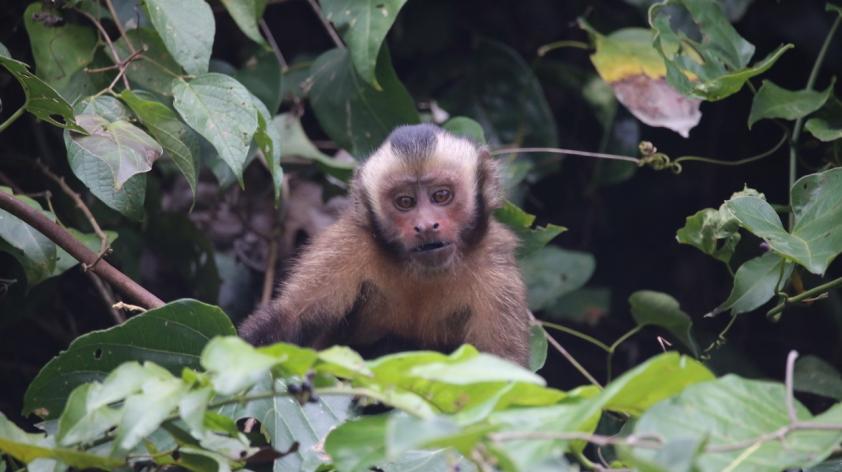
Fishing for evidence of disturbance
I’m here visiting the giant otter conservation project led by postdoctoral research fellow, Dr. Adi Barocas. We have set out to understand how human uses of oxbow lakes that these otters call home influences otters and their habitat. Of the utmost importance to otters: Fish.
Adi and his capable team of Peruvian research assistants arrive at the lake in the mid-afternoon and set up the 40-meter long gillnet and wait. Every 30 minutes, they canoe out to check their catch. They carefully remove the fish, most of them piranhas equipped with razor-sharp teeth, and bring them back to the dock to process. We do this from 3 PM until 8 PM, well after darkness falls. Black caiman approach, attracted by the commotion and the prospect of an easy meal.
The activities we participate in tonight are repeated for two nights at each of 22 oxbow lakes, some located inside the protected area of Manu National Park and others in areas of human use. How do human activities influence the fish on which the otters depend?
From this research, we hope to understand how human activities impact otters and how we can work with government authorities and local communities to mitigate these impacts. We are most concerned about the potential impacts of gold mining and the mercury they use to process the gold which contaminates the water and the food chain.
These data will tell us if human impacts influence the number or diversity of the fish species, their size, and whether they are contaminated with mercury. There is much more work to do, and Adi and his team will continue on doing the hard work to answer these important questions for conservation.
Tomorrow I will embark on the boat and begin the long journey back home.













